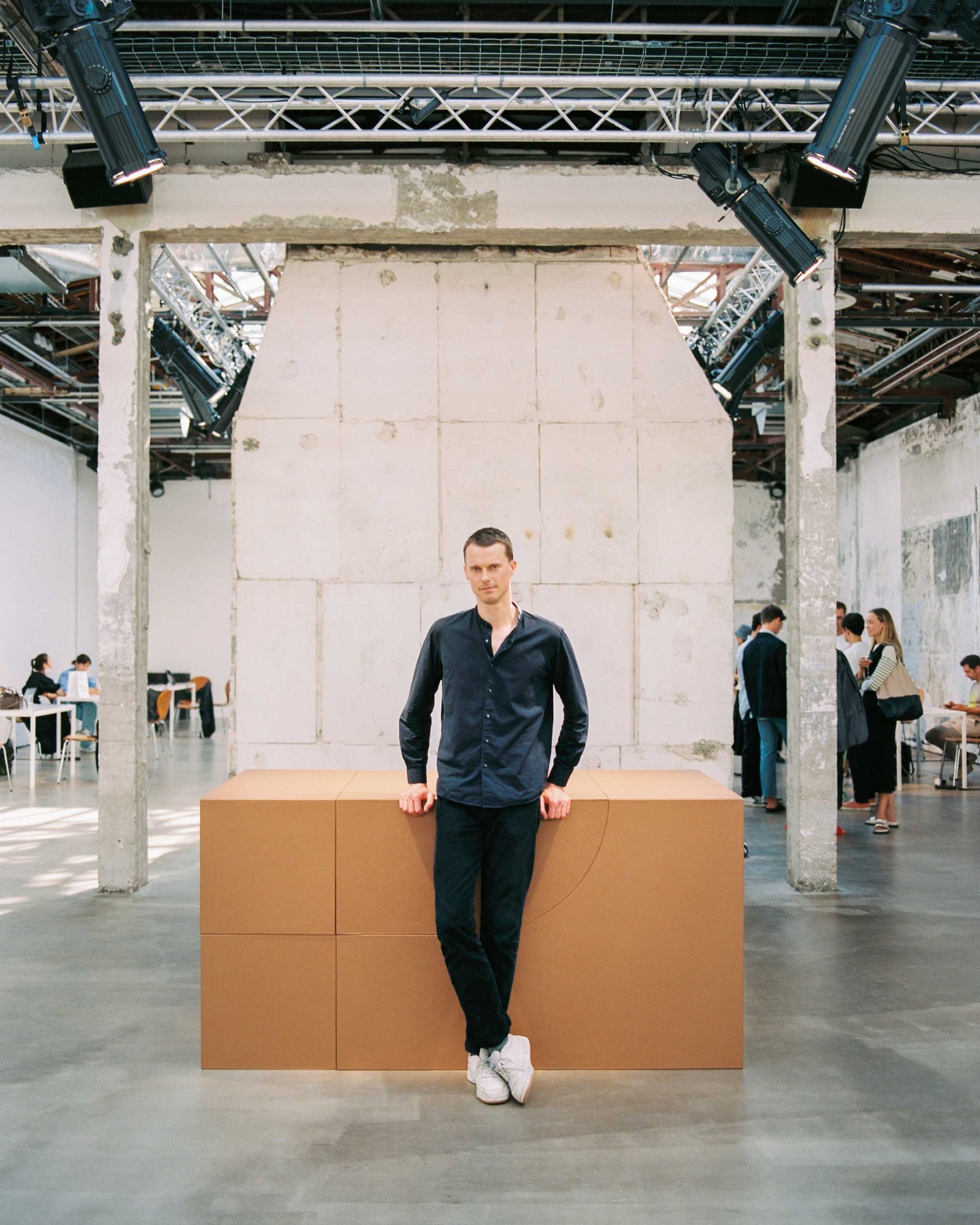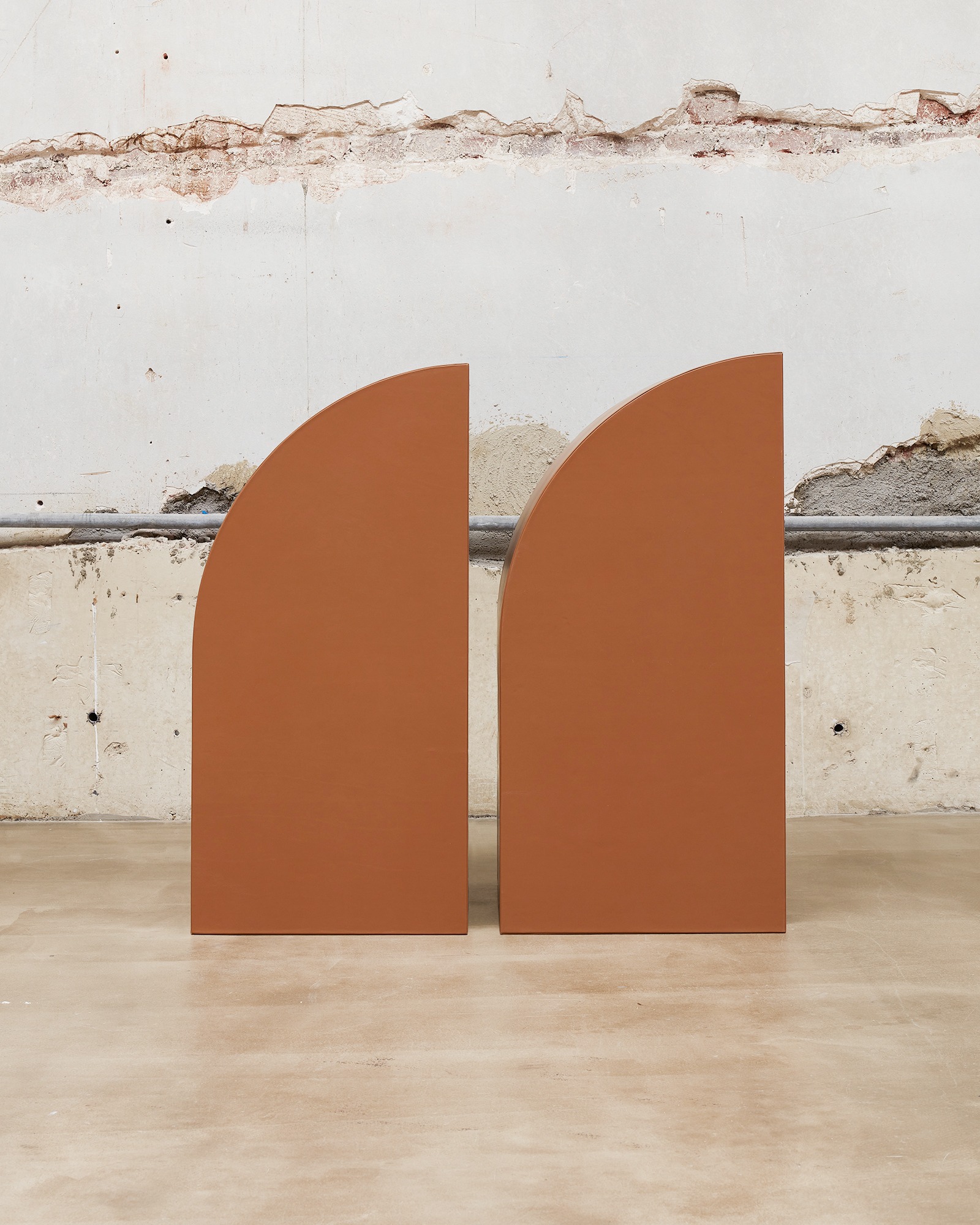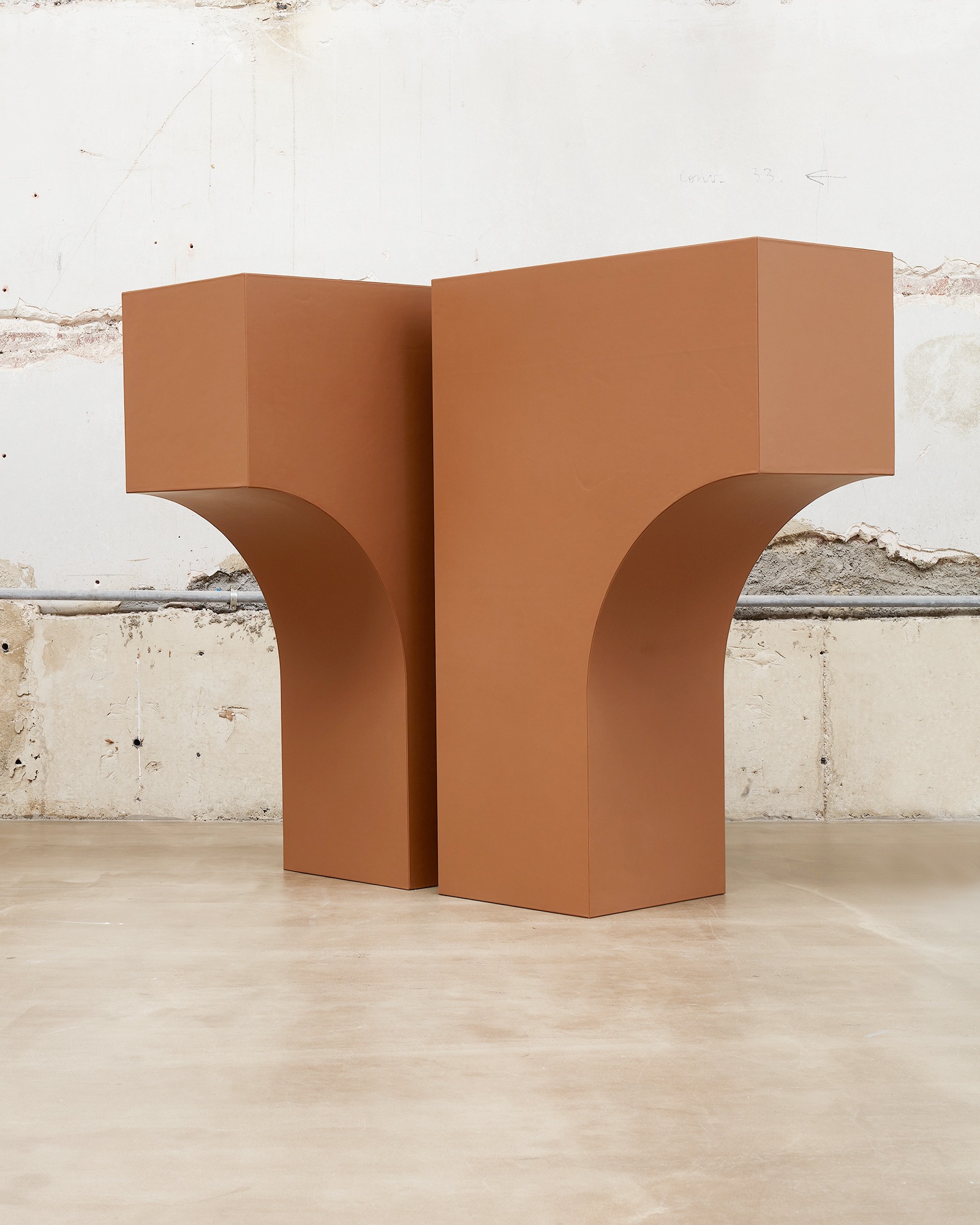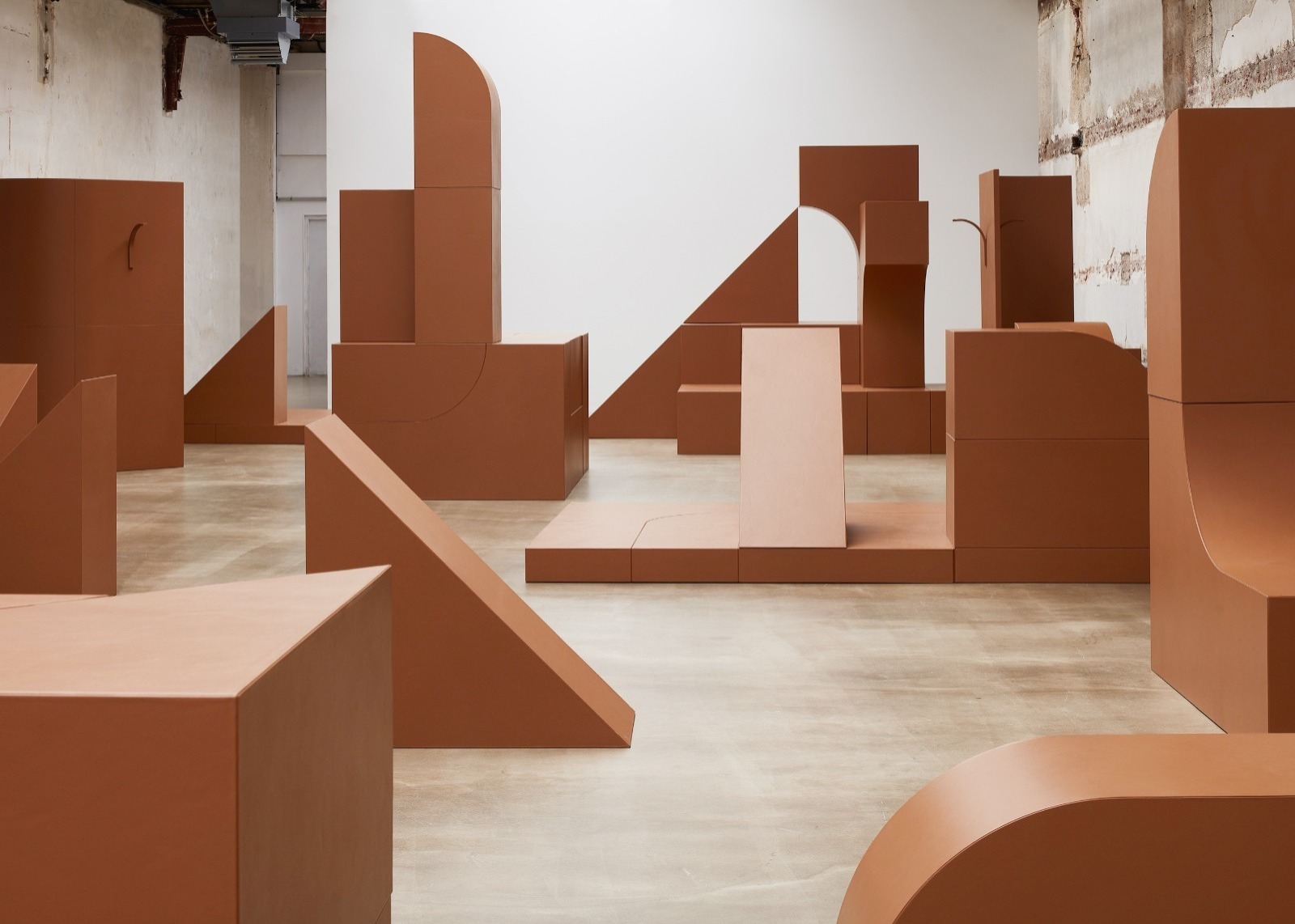
How would you describe your new AT.KOLLEKTIVE retail installation?
The installation is composed as a series of
objects that are assembled together in order
to create wider objects, that we’ll call islands,
and each of the islands will display the works
of one of the designers.
AT.KOLLEKTIVE has five distinct creative
identities, how do you give them each their
own personality, yet connect them together
in a cohesive way through your design?
It is not the purpose of the installation to
express the identity of each designer, because
each of the objects expresses its own identity.
The design has to be discreet enough in order
to create a background that will enable each of
them to express their own identity. The design
itself however also has a strong identity, so the
background is achieved through a uniformity
of colour between all the different islands.
How different is the design development
process when working on a new brand without
any historical context?
Sometimes it’s easier and sometimes it’s
more difficult to work for a brand that has a
history and has an image that‘s already done,
because sometimes we have to abstract ourselves
from that image and rethink it - not always
so obvious.


How do you see the disciplines of fashion,
design and architecture informing, communicating
and feeding off each other?
For me, fashion, design and architecture
are somehow related because they’re applied
arts, so there’s a form, a function and a structure. Although different in discipline, history
and culture, they all inform one another by
the relationship between form, function and
structure.
Your design concept is modular, how does
that bring flexibility to its use?
We have four main pieces, and with these
four main pieces we build islands and we propose
possible series of islands, so there are
five that we like and proposed, but there could
be many others. The user can use one island
or one combination or another combination,
and that brings the flexibility.
How do you approach a retail design concept
that needs to be packed, shipped and
mounted in diverse international locations?
That was one of the interesting things about
this project, and it meant that we didn’t
start from nothing because we had this series
of constraints and this one is a constraint that
is very useful for the design and that‘s the one
that brings this connection between fashion
and architecture because the folds becoming
structural, so each piece can unfold to become
flat in order to be shipped and then we fold
it again and it becomes a volume that you can
assemble.
What are the unique qualities and characteristics
of leather as a material for architecture
and design?
Leather has some characteristics that we
think about; we think that it scratches, or ages
by becoming darker or becoming more shiny,
for example. This is what we know from bags
or leather from the car seat or things like that,
but we can actually do whatever we want with leather because the way it’s tanned totally
changes the way it ages. In our case, we accept
and we like to have a certain ageing because
we like that the material expresses what
it is and we don’t try to go against the material’s
quality, otherwise we would have chosen a
different material.

What impressed you about innovation in
leather when visiting the Ecco leather tannery
in Dongen?
It was very interesting to see how many
different leathers exist that don’t look like leather.
There were so many that I liked but especially
this very thin one that was almost like
paper, and when you fold it has these folding
marks like paper. But in our case, we wanted to
work with leather that looks like an archetype
of leather, that is immediately identifiable as
leather.
How have you integrated Ecco Leather into
your final design?
We decided to actually do more than integrate
it, in that we decided that leather
would really be the basis of this design. So we
imagined this series of objects to be working
like a cardboard box, with leather on the exterior
and on the interior it’s bonded on the
more rigid surface, which enables us to have
all these foldings because at the points where
it folds, it’s really only leather. So we are really
fully using the characteristics of leather for
this project - the materiality has really informed
the form.
How do you design responsibly today?
The first part of responsible design is making
sure we have as little waste as possible, and that we don’t design only for one use or
one time, so we are using the same pieces several
times, in that they will be used in every
different location. But
we can also think that they can
become collectors pieces and many people
could have a piece at their home and they will
hopefully live forever.
Tell me about this Parallélipipède rectangle
and why it‘s relevant to your project?
I loved this shape of the Parallélipipède
rectangle because it‘s the perfect volume and
actually expresses the difference between
something designed by man and something
designed by nature, because nature designs
spheres but never designs Parallélipipède rectangles.
This is perfectly expressed in Stanley
Kubrick’s film 2001 Space Odyssey when
this Parallélipipède rectangle shows up in the
desert and all the monkeys are like “oh what‘s
going on?”. So in our case what I find beautiful
is to have these Parallélipipède rectangle
that lay in the space reminding you a bit of the
work of Carl André for example, but they have
this complexity in the way they are assembled
and all these different geometries that are not
agreed within this shape.
What makes good design engaging, unique
and compelling?
I think good design in general has to be
obvious, so when we design something that
is quite complex and we redesign it as many
times as we need to make it obvious, and
when it is so obvious that we are surprised it
didn’t exist before, I think that‘s when we reach
a good design.